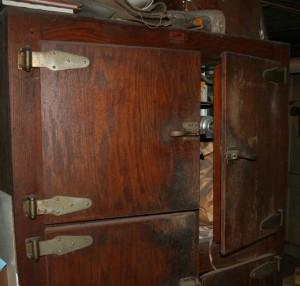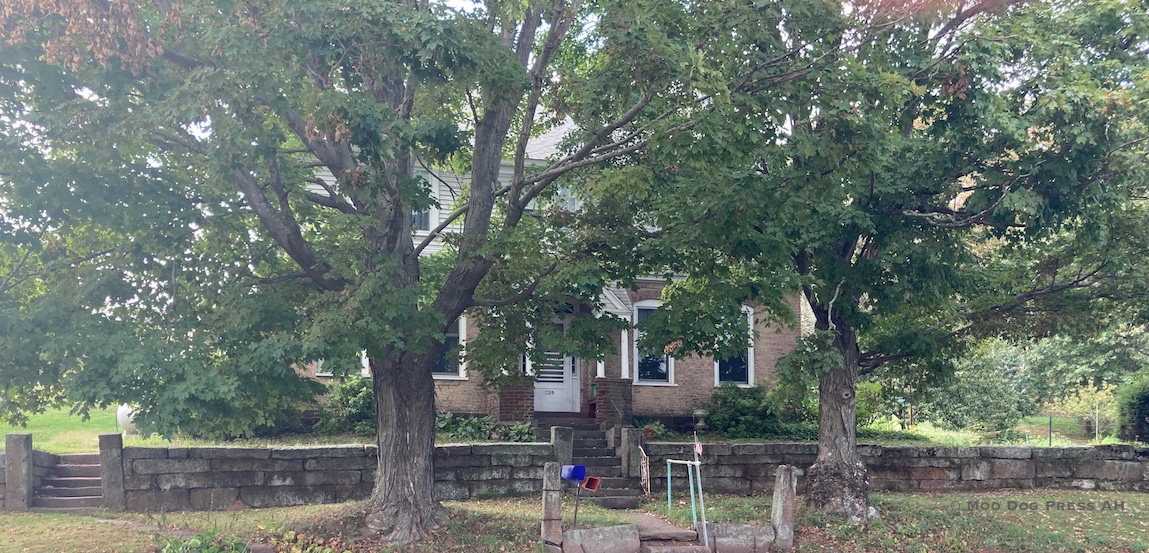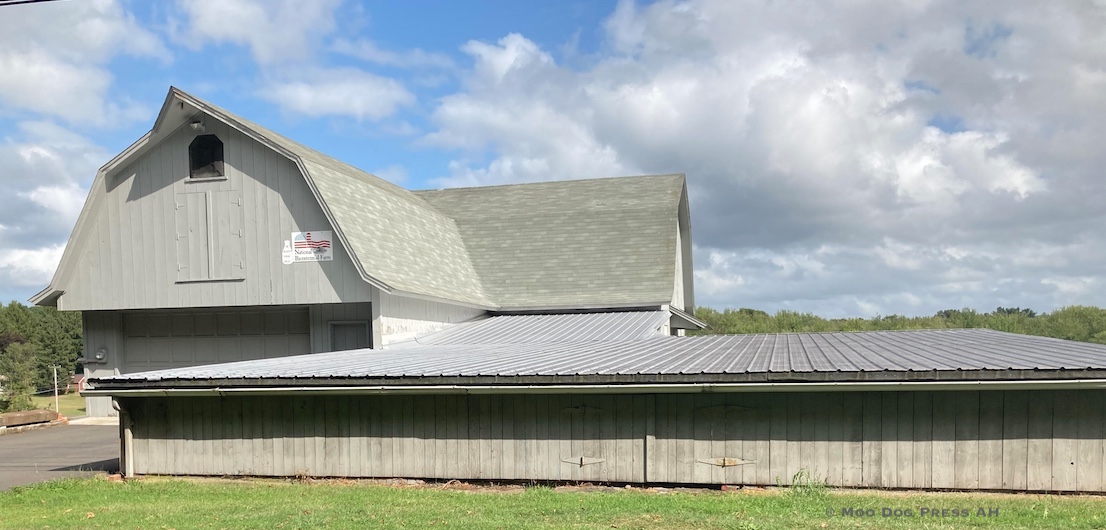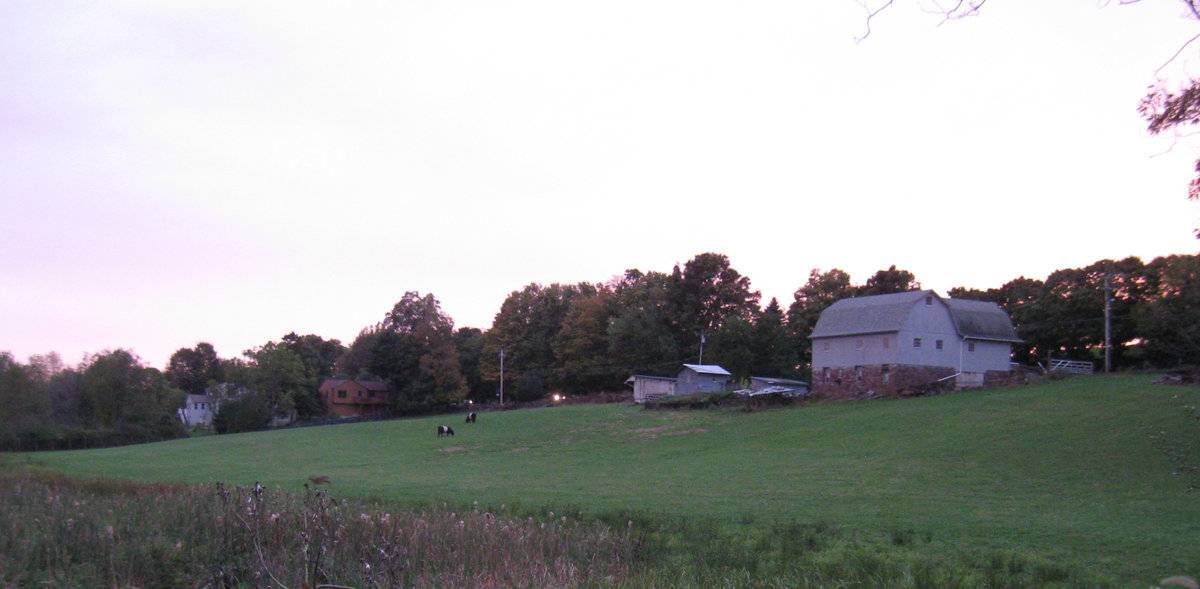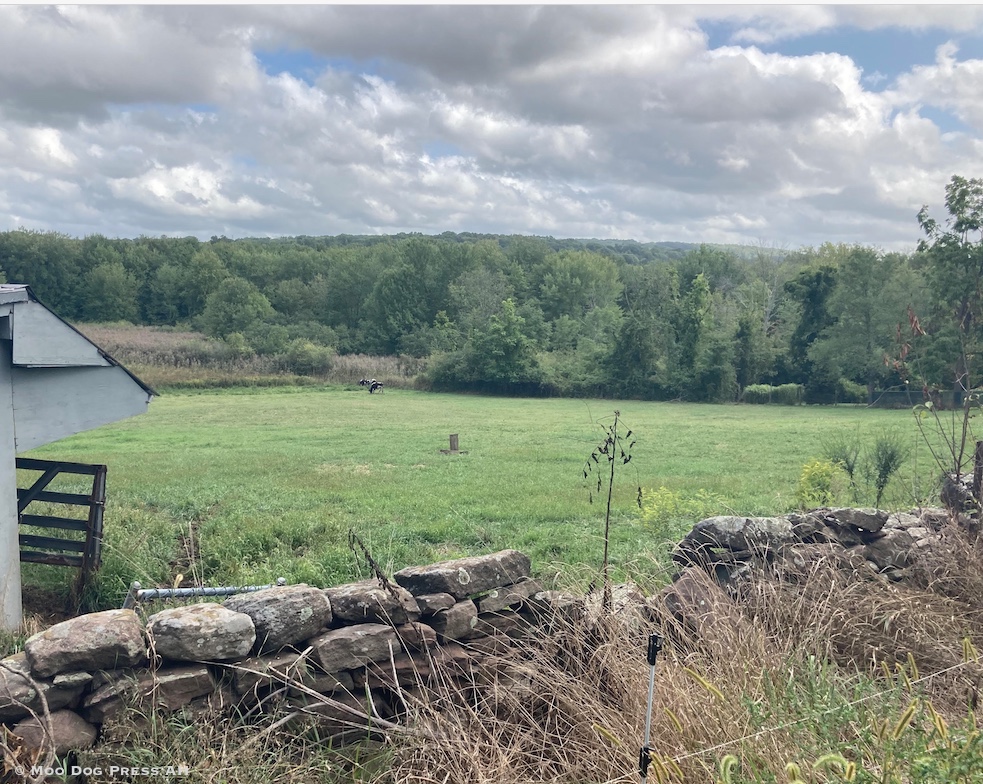Memories of Stanley and ‘Betty’ Wyskiel; History Hubbard-Wyskiel Farm
Note from the publisher: Remember. Respect and honor the human stories of life and land, history. This story, originally published June 17, 2010, with a revised version that appeared in 2017, is featured here because Stanley Wyskiel has passed from this life; his wife, Betty, is also gone. A link to both obituaries is included at the end of this story.
It all started with a quest to find a bale of hay. Actually two bales. After seeing a hand-lettered sign, pulled over and rang the bell at the farmhouse to meet Stanley and Elizabeth “Betty” Wyskiel. After wondering about the unusual architecture of the home and hearing it had quite a history, (and a return visit later for more hay), a request for a story was graciously granted.
The Hubbard-Wyskiel Farm has deep roots in family history and New England heritage. Designated a Bicentennial Farm by the U.S. Department of Agriculture, the Middletown, Connecticut property is where Noadiah Hubbard built his home in 1787.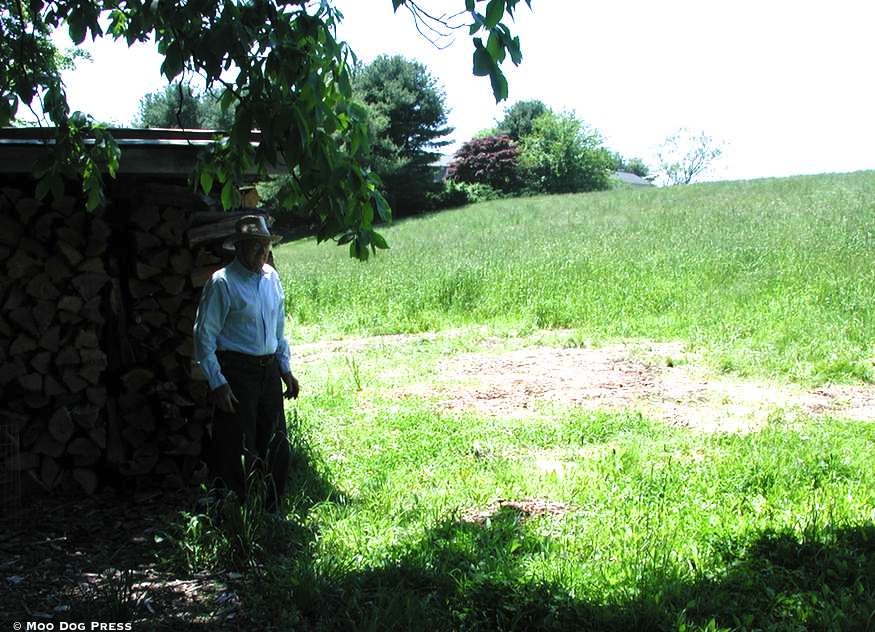
With a backdrop of the woodshed and mowed hill.
The Hubbard family is extensive and a prolific one. To trace and shed light on her own family's branch of the tree, Elizabeth “Betty” (Hubbard) Wyskiel consults what she calls the “trusty Hubbard history.” Treasured family photos and other volumes line up on the dining room table.

Hello. Met the Wyskiels while buying hay.
“My sister has kept the family history on her computer,” she noted, and picks up a hand-colored photograph that depicts an older couple holding a cherubic child.

Stanley Wyskiel. There was one bat inside this spacious root cellar.
“This is my grandfather, Frank Hubbard, and his wife, Ida Mae Chaffee. I was less than a year old when this was taken,” she said, and turned the frame over to read what is written on the reverse. “Frank and Ida Chaffee Hubbard with granddaughter, Elizabeth May Hubbard (Wyskiel), summer 1933.”
He holds a cigar in one hand, the other steadies the child on the couple's lap.
“This is a house that no longer exists. It was further up the road, a place my mother and father rented when they first got married. My grandparents were not young and they lived here on the farm. Eventually my parents moved down here to take care of my grandmother; my mother was a nurse.”
Betty is pointing to the picture of the original house that burned.
The original farm land holdings were extensive. About 100 acres was sold to Col. Clarence Wadsworth to create his estate known as Long Hill.
“Colonel Wadsworth was married to a Hubbard who came from the Nathaniel Hubbard side. Our farm was owned originally by Noadiah Hubbard, the two were brothers. (The history of the brother who owned the Hubbard house at the corner of Laurel Grove and Wadsworth Street is listed on www.historicbuildingsct.com.) What today is Pine Grove Cemetery was originally part of this farm. My grandfather really didn't want to sell to Col. Wadsworth, so he put up a price he thought could not be matched. And Col. Wadsworth said yes, so he got the land. My grandfather did not tell me what was the price.
“After Grandpa sold that parcel to Wadsworth, he bought a field that went all the way to South Main Street to grow field tobacco. He showed me how to chop the leaves and then how to roll cigars. As he got older and he could not go up and down the stairs anymore, I would make them for him.”
The Hubbard-Wyskiel Bicentennial Farm, U.S. Department of Agriculture.
The Wyskiels live with history every day, in the distinctive brick farmhouse on about 12 acres of the original site today.
A marble plaque inset in a wall was carved by Frank Hubbard as a house history: Built 1787, Noadiah Hubbard; remodeled, Alfred Hubbard 1840; ruined, Jan. 27 by fire; and rebuilt, 1927 by Frank C. Hubbard, who also etched his initials at the far right to sign the work.
“There's a root cellar built 100 years after the house,” said Stanley. “1887 is carved in the stone.”
The bunker-like structure is cool and dark, skillfully built of brick in an arched shape. Outbuildings besides the barn include a chicken coop, a drying coop and a shed barn for the cattle. The windmill (vanes removed) in the lower field pumped the water up to the top of the hill and into the cistern still stands.
“Since the cistern was higher than the house and the barn, the overflow fed water to the house and into the barn for the animals,” he explained.
An artesian well is located close by the home, though it is no longer used.
Coup With A Coupe
Elizabeth “Betty” and Stanley Wyskiel met on a blind date.
“I was supposed to go out with someone else, but he chickened out,” she said.
Stanley recalls sitting inside the K-Club in Rockfall, right across from his home.
“I was just out of the service. A guy walked in and said ‘hey, what are you doing, want to go out on a double date?' So why not? I had a 1939 four-door Plymouth, and he had a coupe – so we went out.”
“He proposed on New Year's Eve, he doesn't remember,” she said.
In time, their family branch grew to three sons, Stephen, Michael and Jim.
Photo above from the interview 2010: Stanley and Betty Wyskiel at their home on Long Hill Road in Middletown, Connecticut. The Wyskiel-Hubbard Farm has deep roots and was designated a Bicentennial Farm by the U.S. Department of Agriculture. What an honor to be trusted with their stories. Below are images from 2020.
To see more views of the gambrel barn on the farm, visit Historic Barns of Connecticut.
Here is an excerpt from the site about the barn:
“This is an inverted L-shaped bank barn towards the east of Long Hill Road with a cross-gambrel Dutch roof and a shed-roof addition at the inner junction of the barn. The main arm of the L-shaped barn complex is formed by Arm-I with the cross-gable intersection, Arm-II, on its west eave-side towards the north.
The ridge line of Arm-I runs north-south parallel to this portion of Long Hill Road while that of Arm-II runs east-west.
“The west gable-end of Arm-II faces the road and appears to be the main façade of the barn with the main entrance at the center through a sunken wagon door entrance and the apex of the roof projecting out to form a hay hood. The grade level along the north eave-side of Arm-II gradually declines towards the east revealing the stone masonry wall of the bank level which is accessed by a sliding wagon door entrance towards the east. A nine-pane window can be seen at the first floor level centered above the wagon door entrance. The grade level continues to drop towards the east along the north gable-end of Arm-I which is flush with the north eave-side of Arm-II. The north gable-end of Arm-I has exposed masonry at the bank level and two nine-pane windows towards either side at the first floor level. A similar nine-pane window can be seen centered in the gable attic just below the apex of the roof. The low grade level along the north gable-end of Arm-I wraps the barn along its east eave-side and the south gable-end to form the bank level.
“The stone masonry of the bank level of the east eave-side of Arm-I is punctured by three equally spaced windows with three nine-pane windows above them at the first floor level. The bank level of the south gable-end of Arm-I appears to have two entrances through two over-head garage doors. The south gable-end of Arm-I has two nine-pane windows at the first floor level and a similar nine-pane window just below the apex of the roof. The wooden frame of the L-shaped barn is supported on coursed mortared field stone masonry of the bank. The barn has asphalt shingle roofing and light grey painted vertical siding walls.”
Note: Here is the link to Stanley Wyskiel obituary and memoriam. And in memory of Betty Wyskiel, her words in conversation and followup to the tour and interviews still echo.





